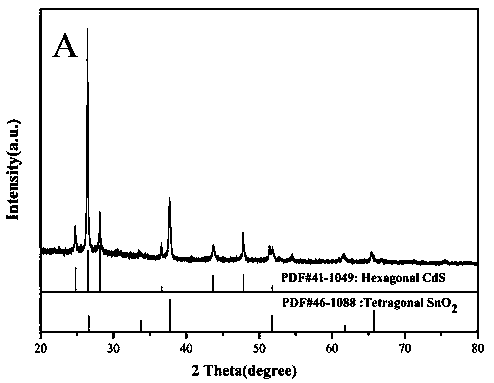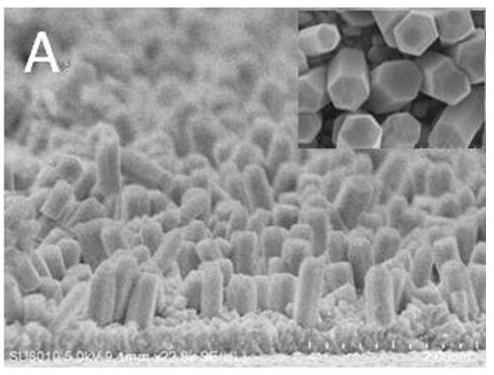Cadmium sulfide two-dimensional nanorod array catalyst and its preparation method and application
A cadmium sulfide nanorod, two-dimensional nanotechnology, applied in catalyst activation/preparation, physical/chemical process catalysts, chemical instruments and methods, etc., can solve the problems of low efficiency, irrelevant photocatalysis and decomposition, low solar energy utilization rate, etc. , to achieve the effect of improving efficiency, improving environmental friendliness, and promoting separation
- Summary
- Abstract
- Description
- Claims
- Application Information
AI Technical Summary
Problems solved by technology
Method used
Image
Examples
Embodiment 1
[0035] Two-dimensional cadmium sulfide nanorod array synthesis method
[0036] Weigh Cd(NO 3 ) 2 4H 2 O, CH 4 N 2S and reduced glutathione (glutathione) were dispersed in deionized water, stirred at room temperature to obtain a precursor mixture; the conductive glass was cleaned and degreased, and ultrasonically treated in acetone, ethanol and deionized water, and dried ; Add the treated conductive glass to the precursor mixture, place it in the reaction kettle, cover and seal the reaction kettle, put it in a stainless steel sleeve and lock it, raise the temperature to 180 ° C, and keep it warm for 48 hours; the obtained conductive glass is deionized Washed with water 4-5 times, transferred to 60 ° C vacuum oven for 1 hour to obtain a sample marked as CdS-NRs sample.
PUM
| Property | Measurement | Unit |
|---|---|---|
| concentration | aaaaa | aaaaa |
| wavelength | aaaaa | aaaaa |
| length | aaaaa | aaaaa |
Abstract
Description
Claims
Application Information
 Login to View More
Login to View More - R&D
- Intellectual Property
- Life Sciences
- Materials
- Tech Scout
- Unparalleled Data Quality
- Higher Quality Content
- 60% Fewer Hallucinations
Browse by: Latest US Patents, China's latest patents, Technical Efficacy Thesaurus, Application Domain, Technology Topic, Popular Technical Reports.
© 2025 PatSnap. All rights reserved.Legal|Privacy policy|Modern Slavery Act Transparency Statement|Sitemap|About US| Contact US: help@patsnap.com



